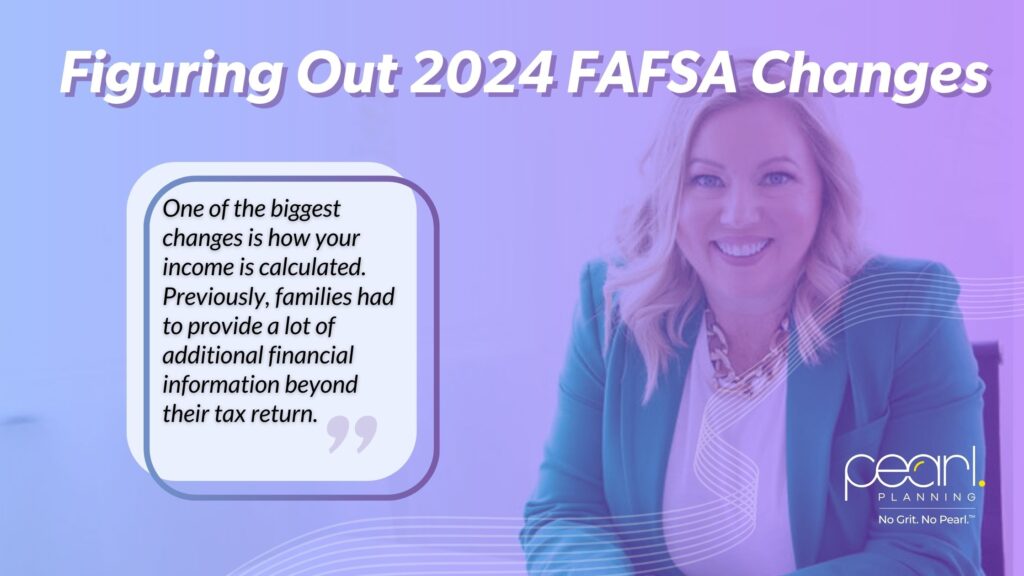Did you know the FAFSA application for financial aid just got a big overhaul? 🎓
There have been MAJOR adjustments that could impact how much aid you receive. You definitely want to be on top of this!
In this episode of the Women’s Money Wisdom podcast, we talked to Ann Garcia CFP® about the FAFSA changes. Ann is the author of ‘How to Pay for College’ and runs the College Financial Plan Masterclass.
🎯 How Is Your Income Calculated?
One of the biggest changes is how your income is calculated. Previously, families had to provide a lot of additional financial information beyond their tax return.
Now, the FAFSA will primarily rely on your tax return data. This includes your adjusted gross income. Contributions to your retirement plan through your employer will no longer need to be added back into your income.
This can actually lower 📉 your expected family contribution (now called the Student Aid Index).
🍀 The Good News
This is great news for families who have been diligently saving for retirement while also preparing for college expenses! The new process is streamlined, making it easier to apply for aid without digging through multiple financial documents. ✅
❌ The Downside
Families with multiple students in college will no longer benefit from the “sibling discount”, which used to divide the expected family contribution by the number of students in college. This could mean higher college costs for families with more than one child in school at the same time.
Despite some hiccups in the rollout, these changes are designed to make the FAFSA process more accessible and straightforward.
Make sure to stay informed and consider how these changes might affect your financial planning for college. Whether you’re just starting the college search or are already in the midst of it, understanding these new rules is key to making the most of your financial aid opportunities. 📌
Want more tips on financial aid and financial planning for college? Tune in to our Women’s Money Wisdom podcast episode 221 to hear more.


